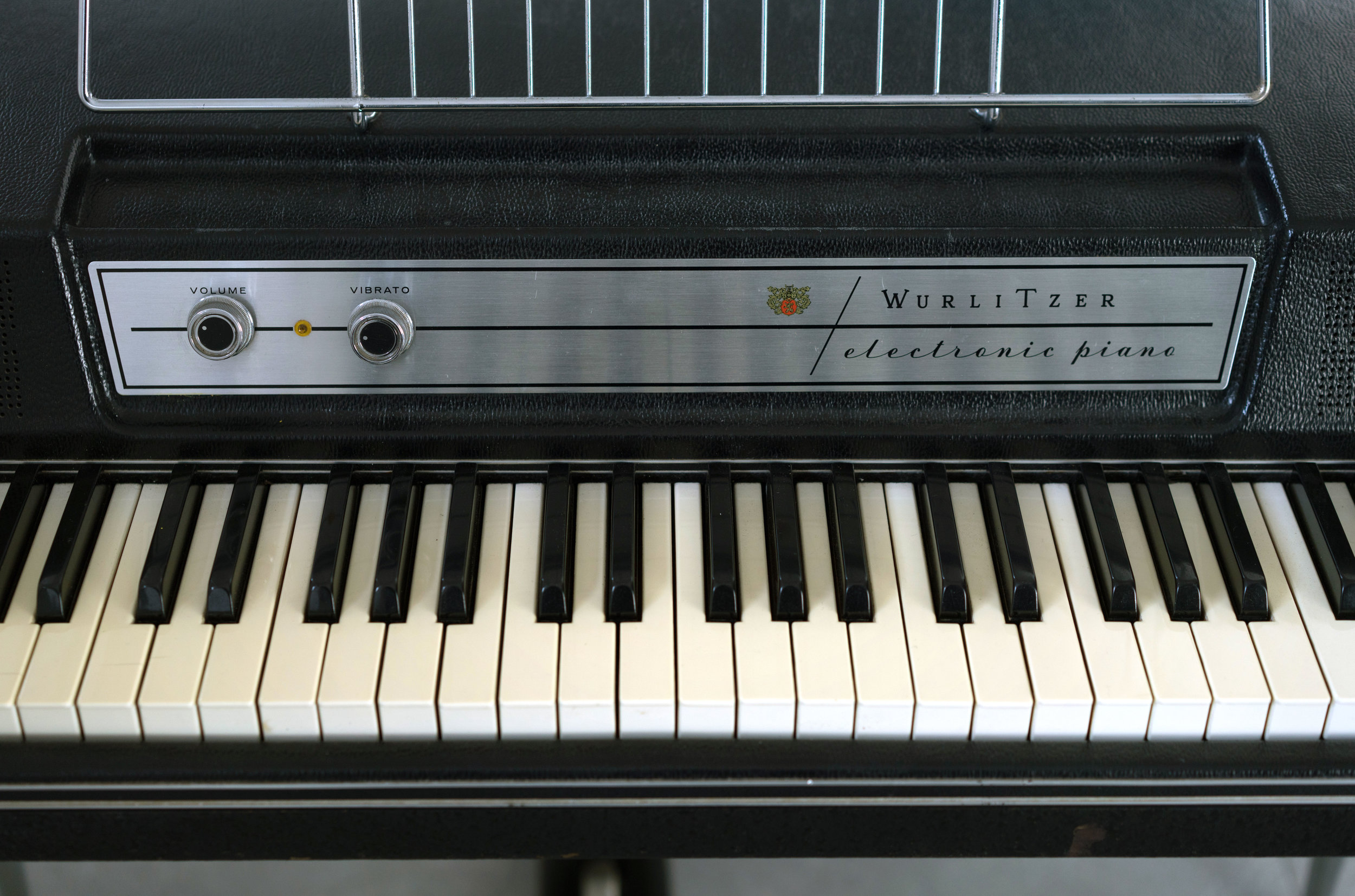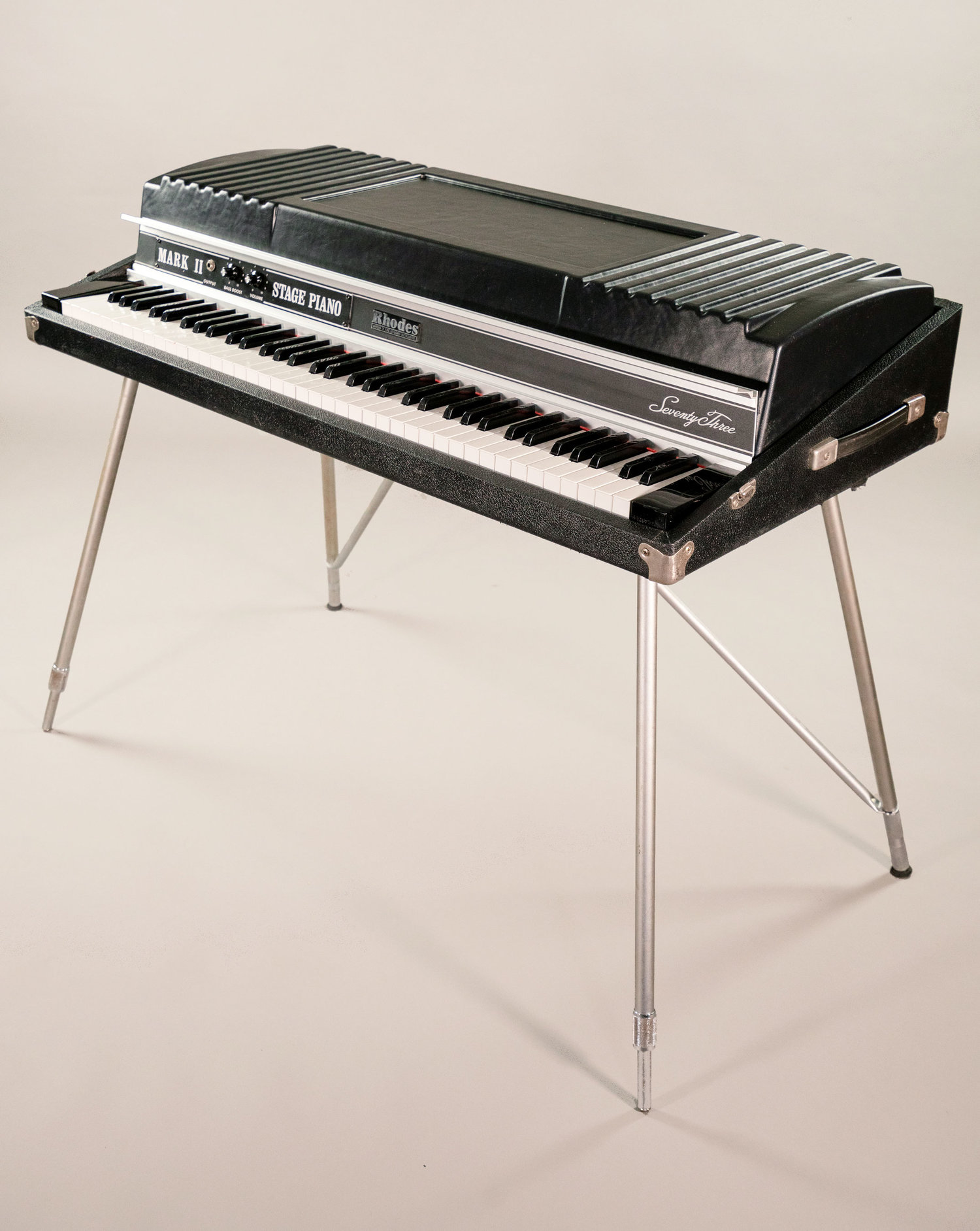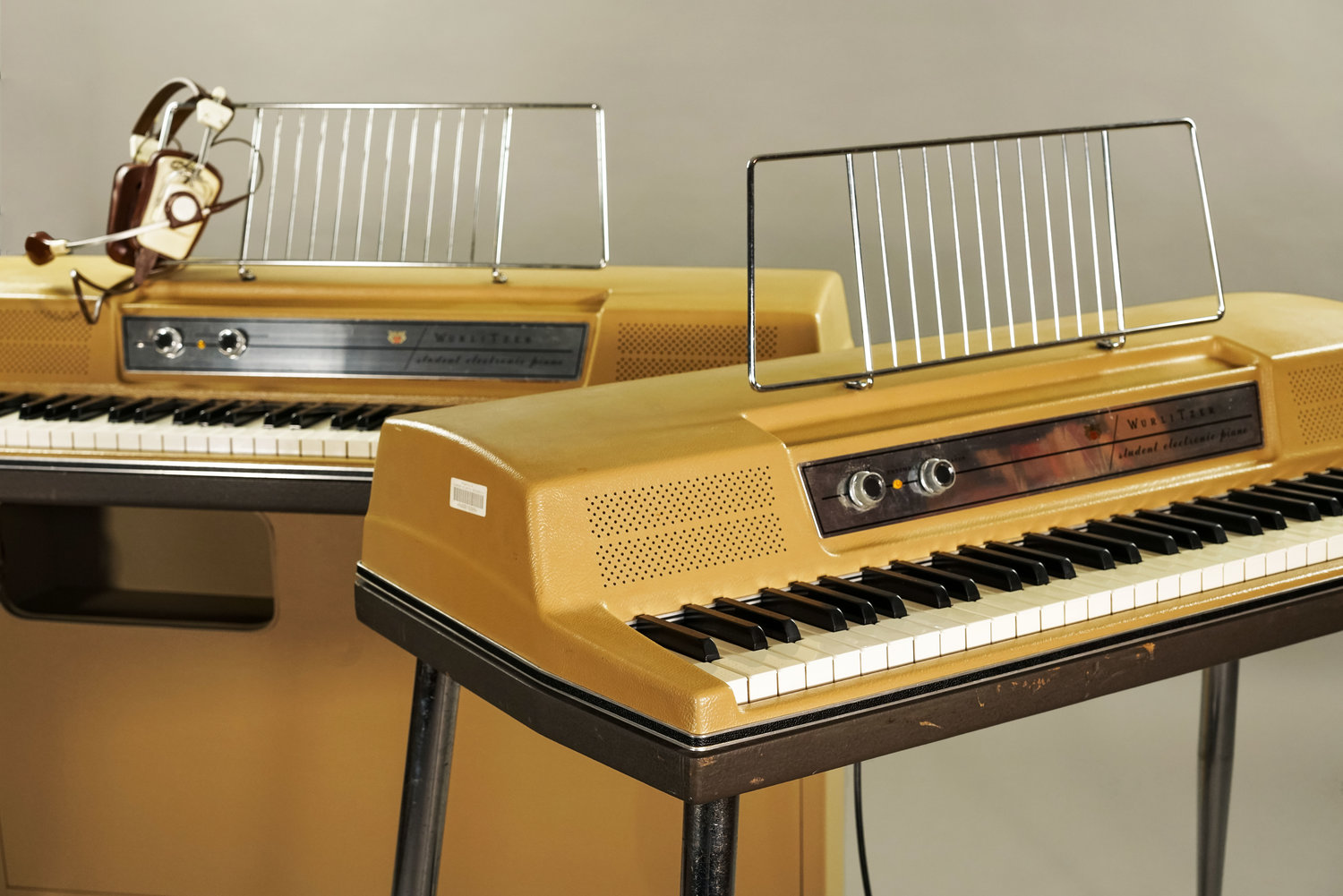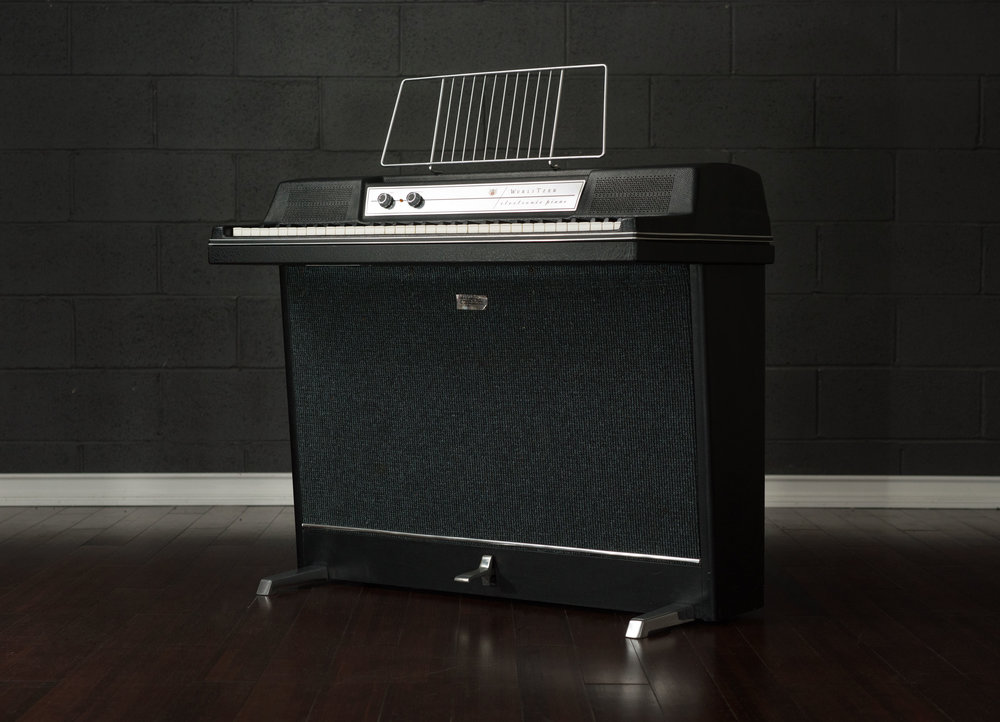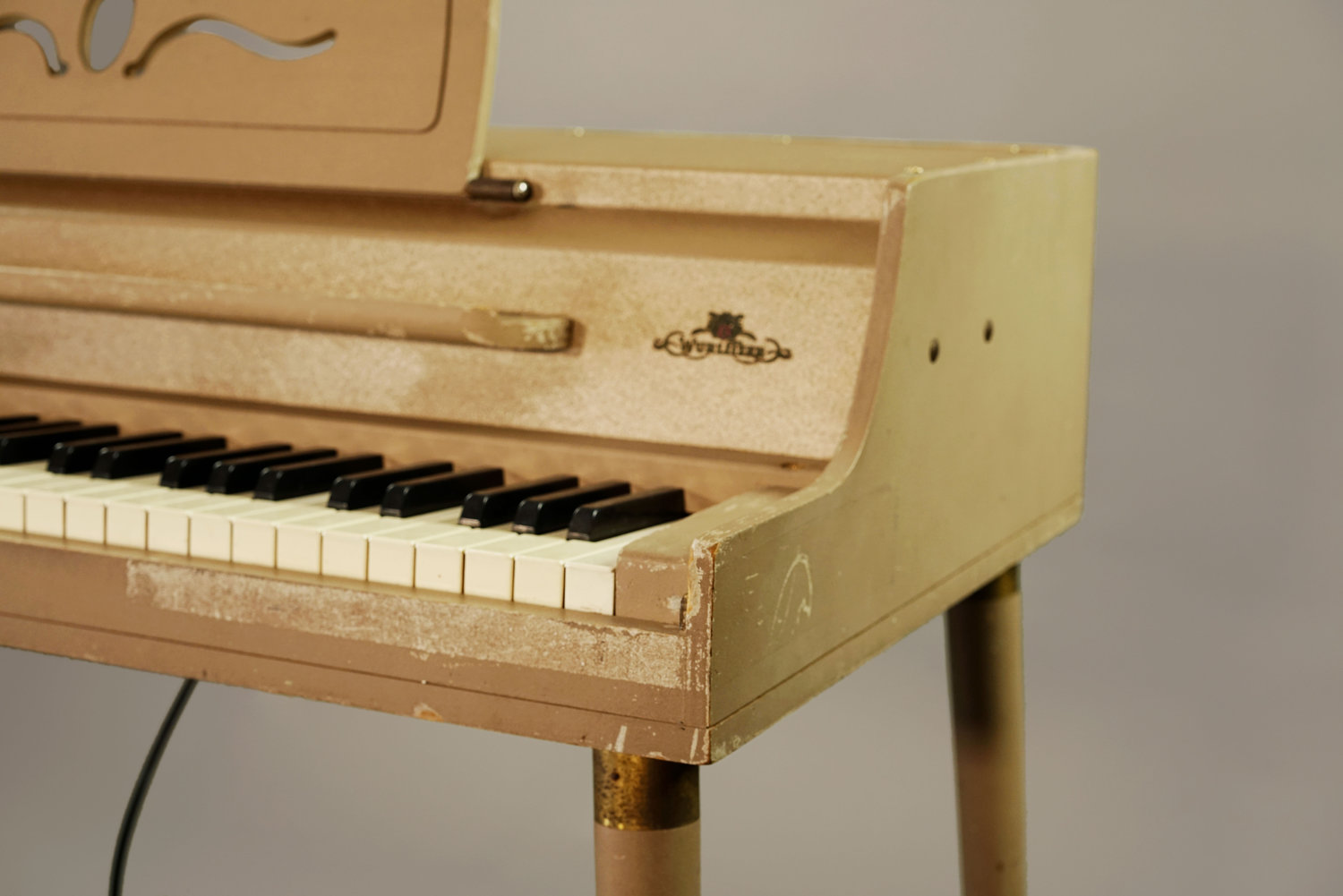What is the Difference Between a Wurlitzer 200 and a Wurlitzer 200a?
A late-model Wurlitzer 200.
The Wurlitzer 200 and 200a are extremely similar. If you are trying to decide between the two models, you should first of all realize that there are no bad decisions here. When restored, both types of keyboard are equally reliable, high-quality instruments. And, of course, both of them have that iconic Wurlitzer sound.
If you can’t decide between a Wurlitzer 200 and a 200a, this guide may help. Below, we’ve listed the differences between the 200 and the 200a.
Ultimately, condition is the most important factor. Both the 200 and the 200a are over 40 years old, and some have aged better than others. If the keyboard is in a state of disrepair, the advantages of particular mounting systems or amp components are only academic. For that reason, this list assumes that we’re comparing two Wurlitzers that are both in excellent shape.
Just tell me: which one is better? If you appreciate the minor idiosyncrasies that make a great piece of vintage gear truly one-of-a-kind, choose an original 200. If you’d sacrifice a little warmth in order to squeeze the most performance possible out of your keyboard, or if you like straightforward, plug-and-play methods of recording, choose a 200a.
An example of a Wurlitzer 200a.
What about console or student 200-series Wurlitzers? Console Wurlitzers are the same as the classic 200/200a, but they are mounted on a cabinet instead of legs. If you prefer to play your Wurlitzer through speakers, they’re great. The speakers provide more bass response and obviously a lot more volume. Student Wurlitzers are the same as their corresponding console model, but some of the features are disabled. We discuss student Wurlitzers at the end of the article.
Differences between a Wurlitzer 200 and 200a
First, some history. In 1968, Wurlitzer released the Wurlitzer 200, a complete redesign of their electronic piano. Its lightweight plastic top, solid state amplifier, and iconic chrome legs made it highly portable and more reliable than ever before. Although the mechanical action had pretty much been finalized by 1964, the amplifier in the 200 was a new design that incorporated the latest in consumer technology.
Throughout the 200’s run, Wurlitzer continued to make adjustments to the design of the keyboard, mostly with respect to the electronics. There are at least three schematics for the 200 detailing minor changes to component values. But at the same time, Wurlitzer was working on a more extensive overhaul of the keyboard’s amplifier. The revised version would be the 200a, released in 1974.
Enjoying this article? Subscribe to our newsletter for weekly repair tips & other vintage amplifier & electronic repair content!
Most of the 200’s differences from the previous model were related to the amplifier and the general physical layout of the keyboard. The 200 is the first model with the speakers and amplifier in front of the action assembly, instead of behind. It is also the first model with a plastic, not metal, top. Because the metal top served as shielding for previous models, the 200 is also the first model that required interior shielding to reduce noise from the reed bar.
Most of the changes between the 200 and the 200a were made with respect to these new features. But because the mechanical action of the 200 had been largely perfected several years earlier over the course of the 140-series, the action assembly is the same between the 200 and the 200a.
Amplifier
The amplifier is a major difference between the 200 and the 200a. The tonal difference between the amps is subtle, but the drastic change in mounting the 200a’s amplifier carries some practical implications. (The 200a’s preamp is on a separate circuit board that is mounted on top of the reed bar. This is discussed later in the section.) In general, the 200a is less prone to noise, but the additional wires can sometimes get caught in the action assembly. This can be inconvenient if you open up your keyboard a lot. On the other hand, the 200 has some interesting vintage components that some musicians may appreciate. In brief:
Wurlitzer 200:
less shielding
all circuit elements on one board
bias-shifting vibrato
vintage components
simple aux output
Wurlitzer 200a
more shielding
preamp mounted separately from power amp
LDR vibrato
newer components
more complex aux out with gain pot
Reed bar shield. This is perhaps the only truly important difference between the 200 and the 200a. Because the 200-series has a plastic lid, Wurlitzer struggled with the question of how to implement the correct amount of shielding. Previous models used their metal lid as a shield, but in the case of the 200 Wurlitzer would have to machine new shields that could be mounted on the interior.
Every 200 comes with a hum shield, which is a long strip of metal, bent lengthwise at a right angle, which mounts over the dampers. However, Wurlitzer 200 amps were still noisy despite the hum shield. Eventually, Wurlitzer designed the reed bar shield, and started adding it stock to 200a Wurlitzers. It’s possible that it was factory-installed on some very late-production 200 models as well.
The reed bar shield is a long, comb-shaped strip of metal that is mounted directly over the pickups. This reduces hum to a significant degree. Without the shield, the Wurlitzer might sound decent through the onboard speakers (depending on the amount of ambient noise in the room), but you will definitely hear a lot of noise through the aux if you attempt to record.
The good news is that the 200a reed bar shield can be purchased for any 200. It fits perfectly and mounts exactly the same, because the 200’s pickup is the same as as in the 200a. All 200 model Wurlitzers that we sell have already been fitted with the reed bar shield.
Location of the preamp. On the 200, all circuit components are located on one circuit board. In the 200a, the preamp is confined to a small circuit board that is mounted on top of the harp. This position reduces hum. The remainder of the circuit is mounted on the amp rail, as in the 200.
With a rebuilt amplifier and a reed bar shield, the 200 is capable of a very low noise floor that is more than suitable for recording. For this reason, the importance of the 200a’s hum reduction should not be overstated. The split preamp is a useful upgrade, but 200 models can sound great without it.
Tremolo. The tremolo in the 200 is bias-shifting while the 200a’s tremolo uses an LDR. In the 200, an oscillator circuit creates a pulsating signal that is sent to a transistor in the preamp at a point that will vary a transistor’s bias. It basically turns the transistor on and off, raising and lowering the gain of the audio signal.
The 200a also has an oscillator, but in this case the oscillating signal is sent to an LED. This LED is positioned across from a light dependent resistor, all packaged inside of a lightproof black box. (The entire assembly is called an LDR.) As the LED turns on and off, the resistor’s resistance changes. One leg of the resistor is connected to the signal path, while the other leg is connected to ground. As its resistance changes, more or less of the signal is diverted to ground. The effect is like a volume knob that is quickly and automatically turned between max and zero volume.
Bias shifting tremolo is often considered smoother, while LDR tremolo can be somewhat choppier and more intense. The 200a has a small trimpot inside that can be used to adjust the intensity of the tremolo. Overall, the 200a is capable of slightly more intense tremolo, but the difference between the two is subtle.
Aux output. The aux output on the 200 is composed of just two resistors and a jack. The 200’a audio signal is directed straight to this jack. The two resistors provide some attenuation, which is necessary to remove noise from the circuit. (Early 200 aux outputs have three components, and should be converted to the late 200 aux out specs for the least noise.)
In contrast, the 200a dedicates an entire active circuit to the aux output, including two transistors to boost the signal. For this reason, the 200a’s aux is more powerful than the 200’s, without introducing further noise. It also includes a small gain pot, which allows you to control the level of signal that is sent to the device. Overall, the 200a aux is very convenient for recording or playing the Wurlitzer through an external amplifier.
A 200 is certainly capable of being recorded direct (and we do so regularly). For best results, we recommend a preamp.
Vintage components. The amplifier in the 200 has older components than the 200a, which can account for some differences in tonal character. Older components have obviously been around longer, so they might have a little more wear and tear on them. Also, older components are more likely to be made from obsolete materials.
This is definitely the case with carbon composition resistors, which are all over the 200. Carbon composition resistors are the noisiest type of resistor. They produce a subtle but audible hiss, which is actually the sound of the carbon particles agitating against each other when a current passes through them. However, some people like the noise that carbon composition resistors produce, because it contributes to the vintage warmth of an amp. In contrast, the 200a uses new carbon film resistors, which are still pretty noisy, but to a lesser degree than carbon composition resistors.
Basically, carbon composition are cool, quirky boutique resistors, while carbon film resistors have poor performance in a boring way. Some builders still use carbon composition for the mojo, while people who prefer a lower noise floor will skip right over carbon film in favor of modern metal film resistors.
Similar, the 200 has a couple of notable vintage capacitors, although they vary from amp to amp. Tropical fish capacitors are common in 200 amps, particularly in the high voltage power supply. Sometimes, you’ll see Mullard mustard capacitors as well. By the time the 200a was manufactured, however, Wurlitzer’s capacitor complement became less distinctive. For this reason, you won’t find any cult-favorite components in the 200a.
Speakers
Another major difference between the 200 and the 200a are the speakers. The 200 has alnico speakers which are mounted to the amp rail. The 200a has ceramic speakers that are mounted directly to the plastic lid with four flowerhead screws. (The presence or absence of these screws are the quickest way to tell which model you’re looking at.) Alnico speakers have a smoother sound and some natural compression when played at high volumes. This gives the 200 a touch more warmth.
The two mounting systems are also significant. Because the 200’s speakers are welded to the amp rail, they are extremely stable and almost never cause rattling or other odd mechanical sounds. In contrast, 200a speakers can rattle if they are not firmly screwed in place. Also, because the speaker wires are often fragile, removing the lid of a 200a must be done very carefully.
However, there are other benefits to the 200a’s lid mounting system. Mounting the lid decouples the speaker from the amplifier, and also transforms the Wurlitzer’s lid into a speaker baffle. Mounting speakers in a baffle allows them to perform with more volume and consistency. The speakers are also physically closer to the user, which certainly helps with volume.
Reeds and mechanical action
All of the mechanical parts between the 200 and 200a are interchangeable. This includes hammers, whips, dampers, keys, and reeds. Reeds from 200a models produced after about 1975 may be thicker than earlier reeds, but their compatibility is not affected because the shape is the same. Because of this, 200-series Wurlitzers are easy to repair. All of their parts are relatively common and replacements can be acquired even today.
Note on student versions
The student version of the 200 is the 206, and the student version of the 200a is the 206a. They are equivalent to their non-student counterpart, except that the vibrato and aux output are disabled. It is easier to add these features to a 206, because all of the components are already present on the 206’s circuit board. All you need is a vibrato pot and a few adjustments to the wiring.
On the other hand, it is a lot more work to add these features to a 206a. Although the 206a uses the same circuit board as a 200a, all of the vibrato and aux components are absent. To enable vibrato on these keyboards, you’ll have to install all of the circuit components according to the layout in the service manual. This is, of course, only a factor if you are choosing between an unrestored 206 and 206a. Any student-model Wurlitzer that we currently have in stock already has vibrato and aux output enabled.
Further Reading
Browse all of our articles on restoring vintage gear. Or, click on an image below.

